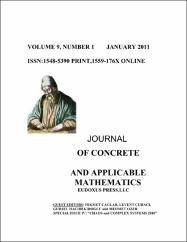Temporal and three dimensional spatial analysis of earthquake activity between 1970 and 2010 along the North Anatolian Fault Zone, Turkey

View/
Access
info:eu-repo/semantics/restrictedAccessDate
2011Access
info:eu-repo/semantics/restrictedAccessMetadata
Show full item recordAbstract
Characteristics of seismic activity from 1970 to 2010 along the North Anatolian Fault Zone (NAFZ) are analyzed to make a statistical assessment by using the Gutenberg-Richter b-value, seismic quiescence Z-value, fractal dimension Dc-value, and spatial, temporal and magnitude distributions. Magnitude completeness, Mc, changes between 2.7 and 2.9 in all parts of the NAFZ. Frequency-magnitude distribution of the earthquakes is well represented by the Gutenberg-Richter law with a b-value typically close to 1. A strong decrease in temporal distribution of b-value is observed before the great main shocks. Dc-values are relatively large and the seismic activity is more clustered at larger scales for all parts of the NAFZ. From the standard normal deviate Z-value test, eight significant anomalous zones are centered at 41.08ºN-28.58ºE (around Silivri), 41.47ºN-29.51ºE (in the Black Sea), 40.69ºN-29.78ºE (including Izmit), 40.26ºN-26.46ºE (around Gelibolu, Canakkale), 40.59ºN- 31.03ºE (including Duzce fault), 40.86ºN-35.30ºE (around Amasya), 39.48ºN-39.74ºE (around Erzincan), and 39.06ºN-40.50ºE (around Bingol).

















